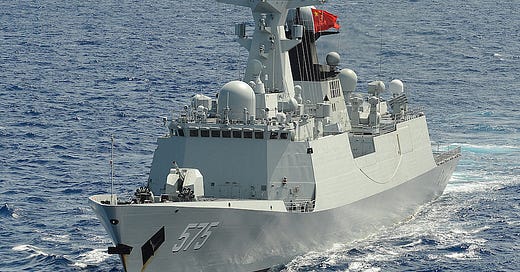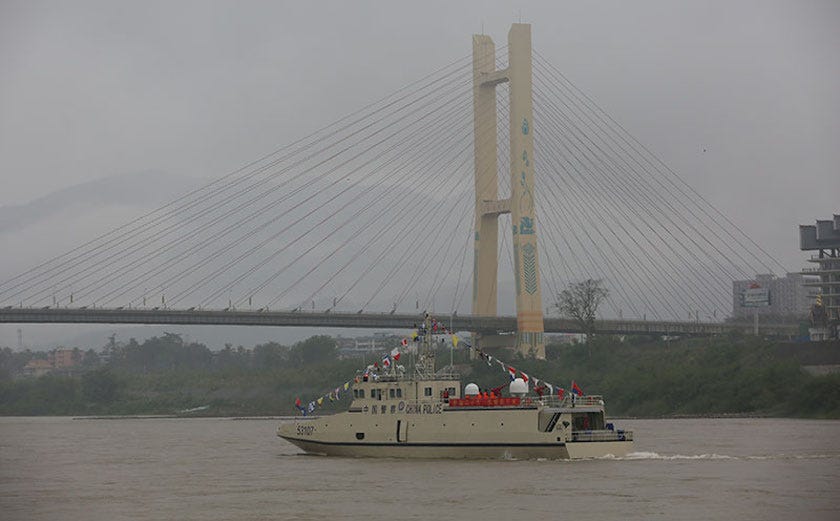China’s muscle follows its money into Southeast Asia
China is Southeast Asia's leading trade partner, and it's being "very, very bold" about expanding its security presence there.
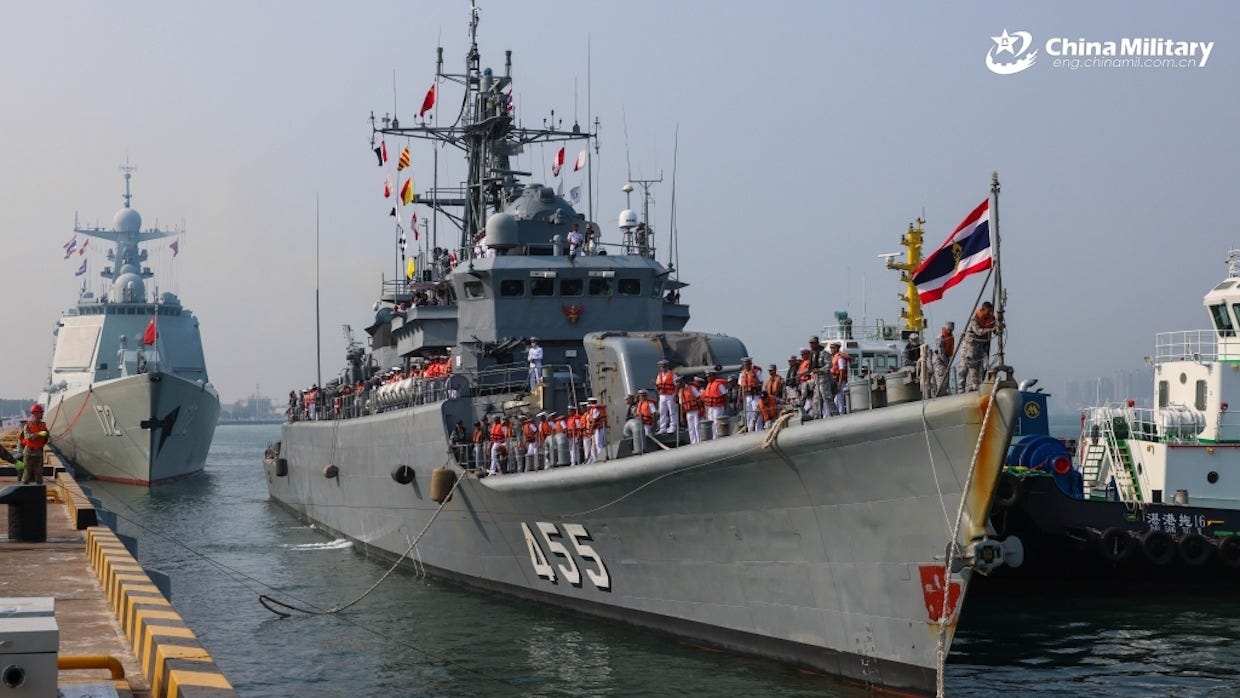
BANGKOK — China is more overtly pursuing a security role in Southeast Asia, using military exchanges, defense diplomacy, and police presence to build up influence among its smaller neighbors, which make up one of the world’s most economically dynamic regions and overlook some of the world’s busiest waterways.
The US has long been the preferred security partner for many Southeast Asian countries, who value the frequency and complexity its military exercises and other exchanges. But those countries have also sought to strike a balance between the US and China, benefiting from ties to both while spurning neither.
Beijing’s move now into the security realm is not only a challenge to US’s traditional sway in that domain but also a threat the region’s ability to maneuver between the rival superpowers.
China has long been Southeast Asia’s leading trade partner. That status is “quite an old story,” and Beijing has made clear its interest in other forms of power, Prashanth Parameswaran, a global fellow at the Wilson Center, told the US-China Economic and Security Review Commission in March.
“China has been talking a lot more publicly about its non-economic levers of influence over the past few years” and has been “very, very bold” in seeking Southeast Asia’s participation in its Global Security Initiative and in pursuing access to dual-use facilities, which can support commercial and military activity, said Parameswaran, an expert on Southeast Asia.
China’s overtures aren’t secret and it doesn’t require parsing statements to see them. “They're saying this publicly” to all Southeast Asian states, Parameswaran added. “The strategy that people talked about hypothetically, maybe about two decades ago, that China, like every power we've known in history, is going to initially start with economic levers of influence and then move to the security domain and have comprehensive levers of influence — I see that very much happening in Southeast Asia.”
‘You've got a lot of China here’
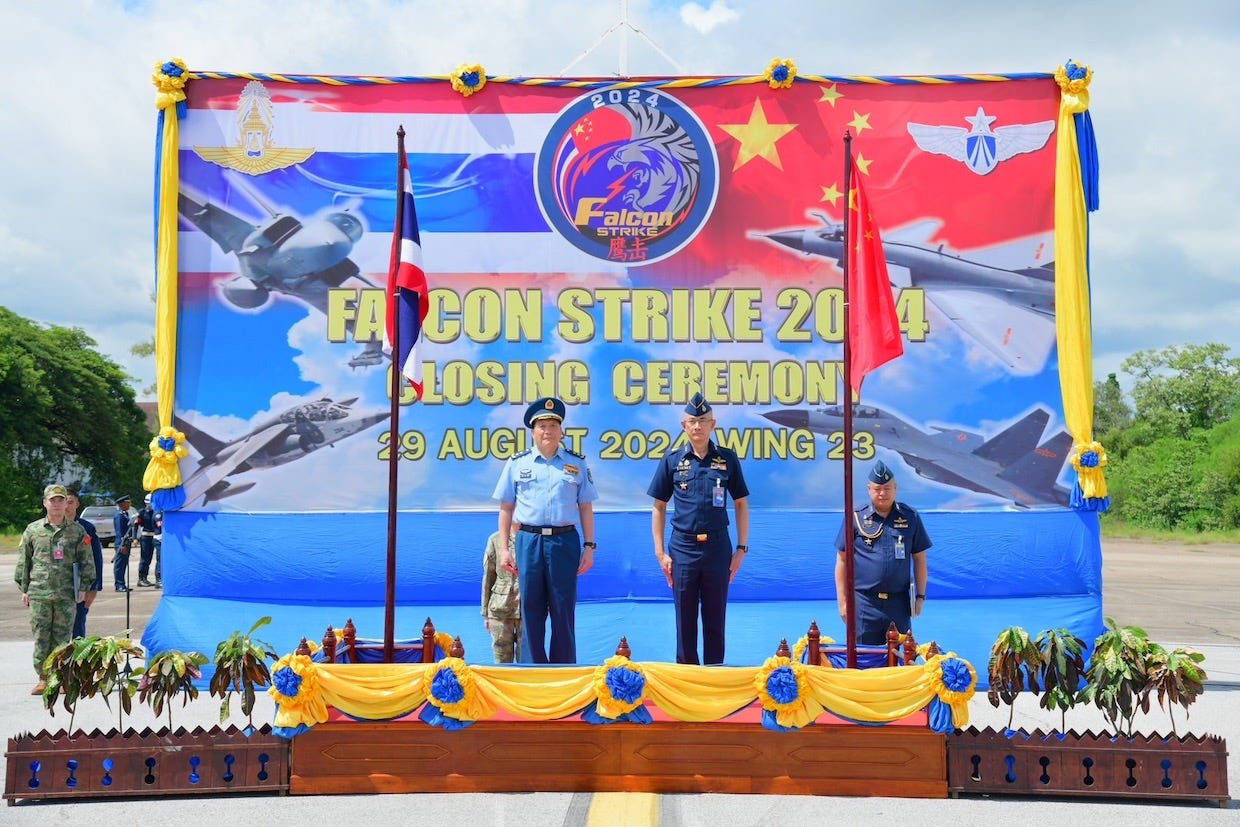
In contrast to China’s military buildup in the South China Sea, where it has clashed with its neighbors, particularly the Philippines, over its expansive claims, Beijing’s security inroads in mainland Southeast Asia have often been through agreements, and its engagement has intensified in recent years.
After Beijing lifted its zero-Covid policy in January 2023, Southeast Asian countries were its most frequent contacts for senior-level military meetings, with 16 that year, according to a US Naval War College report. (Africa, with 15 meetings, was the only other region in double digits.) Ten of the Chinese navy’s 27 foreign port calls in 2023 were in Southeast Asia, the most of any region, and China’s joint military exercises with countries in the region jumped to 14 in 2023 from two the year before, the report said. Those exercises also involved a growing number of countries, including rival South China Sea claimants, and more personnel.
China’s high-tempo military diplomacy continued in 2024, with milestones that demonstrated its links to its neighbors. Last summer, Chinese solders arrived in Laos for an exercise using the recently completed Laos-China railway, which was funded by China’s Belt and Road Initiative. A few weeks later, China sent a brand-new jet to Thailand for an annual air force exercise, underscoring how Sino-Thai military exchanges have expanded and intensified.
Alongside Laos, Cambodia is one of China’s closest partners in the region. Beijing and Phnom Penh have expanded diplomatic and economic ties and developed a stronger military relationship as US-Cambodia relations have withered. China has also been renovating Cambodia’s Ream naval base in an arrangement that observers suspect will bolster the Chinese military’s nascent overseas presence. Cambodian officials insist that Chinese forces will not get special privileges at the base, which will be inaugurated in early April.

Developments at Ream are “just one sign of something that's going to become more regular across the region,” Parameswaran said. Chinese officials are “talking about mini-lateral exercises, more patrols, going across all of these Southeast Asian countries and saying, ‘Look at how much we're giving you economically. Why are you not doing more with us in the security domain? You can do something with the United States, but you need to do more with us.”
China has also pursued more non-military security engagement, usually law-enforcement related, in Southeast Asia, with a focus on Mekong River countries, particularly Thailand, Laos, and Cambodia. Chinese security forces have done river patrols with counterparts in those countries and worked with their police to crack down on transnational crime, including illicit activity related to the scam centers. Some of those efforts are associated with China’s Global Security Initiative, one of several projects Beijing has launched to promote its vision of international order.
That engagement reflects how some of those countries have tilted toward Beijing, but the Chinese government has also used pressure to secure cooperation. After a Chinese actor went to Thailand for work and was abducted to a scam center in Myanmar, China leveraged fears of harm to the Thai tourism industry to get Bangkok to agree to more law-enforcement cooperation. China also pushed Myanmar's junta to allow its private security forces to protect infrastructure projects connecting southern China to the Indian Ocean, raising concerns about its influence in that country amid its civil war.
Those are cases “where the Chinese police are often using the presence of the criminal networks as a real reason to deploy themselves overseas or to gain more security access in countries around its periphery,” Jason Tower, country director for Myanmar at the US Institute of Peace, said during a separate panel at the hearing.
Southeast Asian governments have often accommodated China’s security overtures to address issues of mutual interest and maintain good relations with their larger neighbor, but many have real concerns about China’s security presence in their region.
Vietnam has close but contentious relations with China and disputes with Cambodia, and the Chinese presence at Ream raises particular concerns. With bases in mainland China, the South China Sea, and now at Ream, China’s military reach seems to wrap around Vietnam. The base itself is small and has limited military utility, but Hanoi is “concerned that Chinese personnel operating advanced radar systems in Ream could monitor air traffic in southern Vietnam,” Rahman Yaacob, a research fellow at Australia’s Lowy Institute, told me in December.
Ream and other facilities observers believe could be converted to military use are also close to Cambodia’s border with Thailand, parts of which are disputed and have seen deadly fighting. Thai defense and intelligence officials have watched China’s security presence grow and, like Vietnam, worry about “encirclement,” a Bangkok-based analyst told me in last year. “The Thais are looking around and they're thinking, 'OK, that's our border right there, Laos, Cambodia, Myanmar — what's left?’” the analyst, granted anonymity to discuss sensitive discussions, said.
China’s moves may not be a deliberate campaign to surround Thailand, but they have worrying implications for Thailand’s sovereignty and its options to respond to a crisis. Thai officials “are concerned, because if something does kick off, then you've got a lot of China here,” the analyst said.
China’s law-enforcement presence raises similar sovereignty issues, “where the host countries really have very limited ability to control what Chinese police are then doing,” Tower said at the hearing. China brings “models of policing that just do not at all fit with the context” of those countries and worry their leaders, even in Myanmar, where the junta is dependent on Beijing. “In mainland Southeast Asia, I think you see where there's a lot of countries where there's very strong concerns about China on the security side,” Tower added.
Influence vs. trust
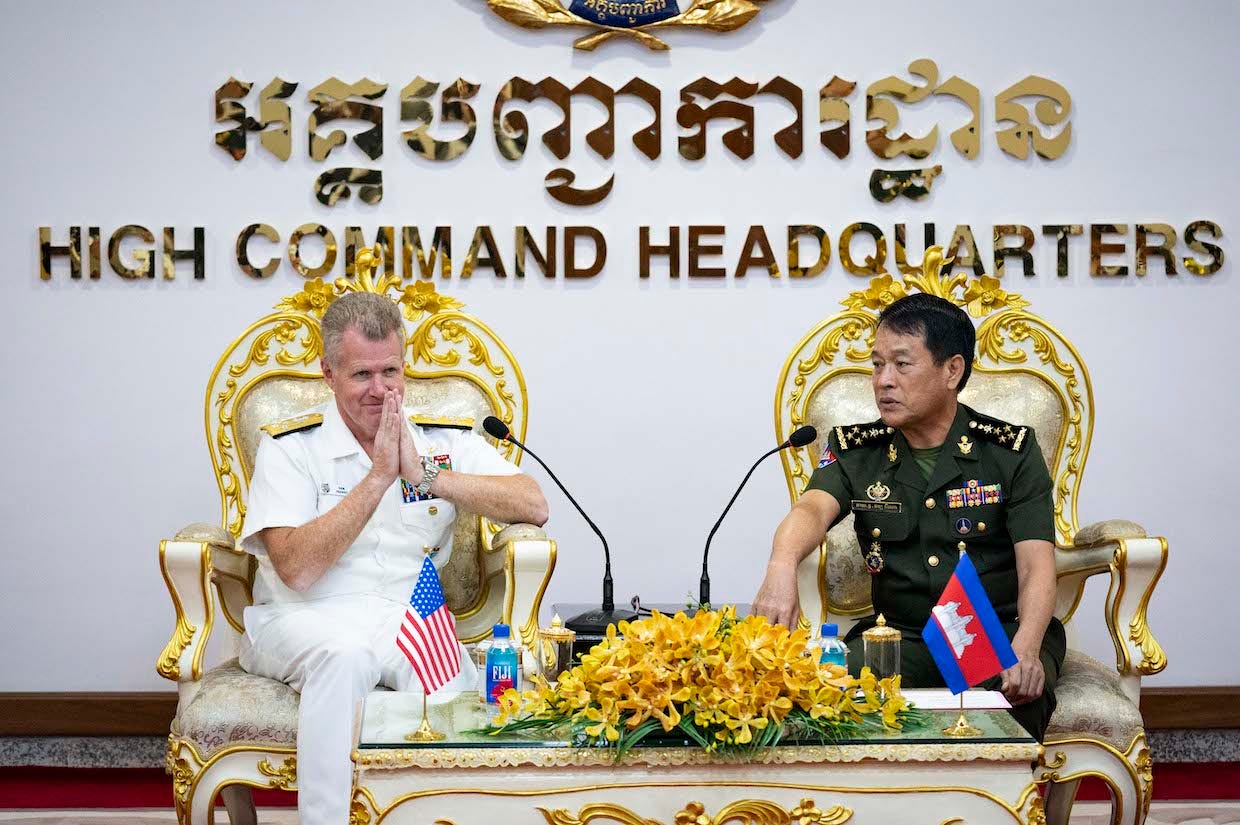
China’s ascendent security influence in Southeast Asia is not locked in. Its military exercises are still considered superficial, and the US remains the security partner of choice for countries in the region, especially for training and other military exchanges.
Current US policy may undermine Washington’s standing, but there’s no guarantee Beijing will take advantage of it. China’s advance in Southeast Asia is a decades-long story “filled with perceived windows of opportunity” that it has been unable to capitalize on, Parameswaran said at the hearing.
“Consistently across the region, China is seen as the most influential power” but also as “the most distrusted power,” Parameswaran added. “There's a lot of rhetoric to China's sort of window of opportunity, but a lot of that is not repeatable across the domains.”
Yet China’s ambitions are clear. Yaacob, who met Cambodian officials and toured Ream last year, has said Beijing’s expanding defense relationship with Phnom Penh was part of an effort “to replace the American influence as a security partner for the region.” And while Ream’s utility is limited, there are other places in the region where Beijing’s presence could have more severe implications.
Parameswaran pointed to Timor Leste, which “is right near certain areas where you're able to run submarines” between the Indian and Pacific oceans and where a Chinese military presence could be a challenge not only for the US but also Australia and Indonesia.
China’s interest in accessing dual-use facilities in places like Malaysia “has not taken off as much as they would like,” Parameswaran said, “but you could easily see what is happening in mainland Southeast Asia — where we usually see the initial indications of where China's advancing — move to maritime Southeast Asia, where the US actually has had a very significant strategic advantage.”


